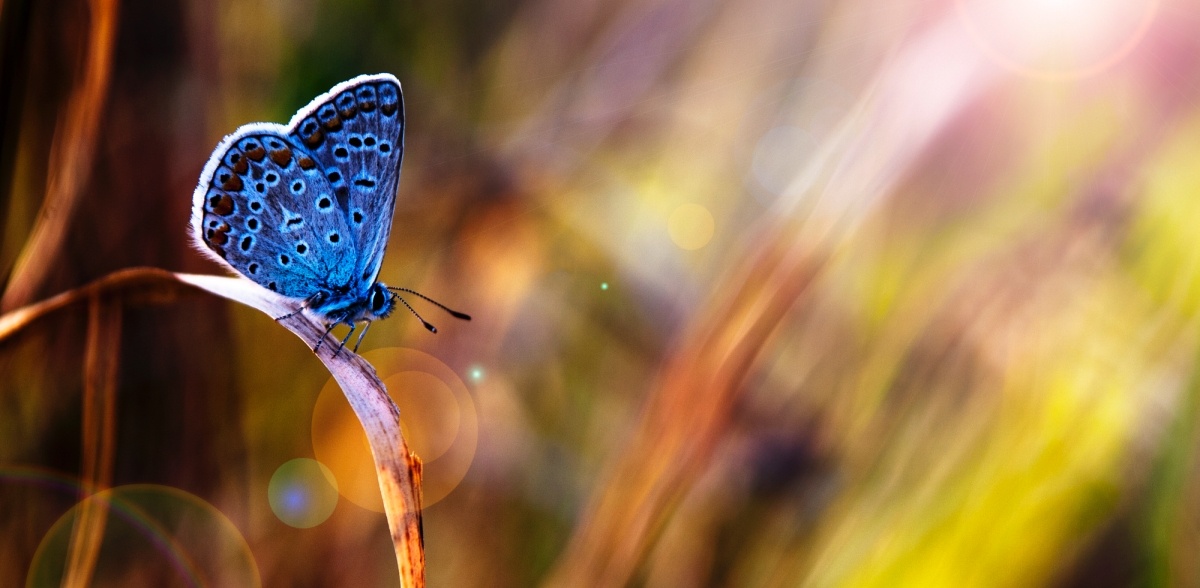Instead of pigment-based colored paint, which requires artificially synthesized molecules, a researcher has developed an alternative way to produce natural paint
A new sustainable natural paint that was born drawing inspiration from butterflies. University of Central Florida researcher Debashis Chanda, a professor at UCF’s NanoScience Technology Center, inspired by butterflies to create the first large-scale, multi-coloured, ecological alternative to pigment-based dyes, i.e. classic paints. The result, published in Science Advances, could help make dyes that are ecological and sustainable, as well as non-toxic.
«The range of colors and shades in the natural world is astonishing – from colorful flowers, birds and butterflies to underwater creatures like fish and cephalopods» says Chanda in her studio. «Structural color serves as the primary color-generating mechanism in several extremely vivid species where the geometric arrangement of two typically colorless materials produces all hues. Instead, with artificial pigments, new molecules are needed for each color present». In practice, when creating paint, each color is represented by an artificially generated molecule. This mix takes work, time and, above all, has a far from trivial impact on the environment. Furthermore, it is sufficient to think that some mixtures, such as those used to produce heat-resistant paints, can be toxic if inhaled for a long time.
Chanda’s research team therefore developed a so-called “plasmonic” natural paint, which uses the nanoscale structural arrangement of colorless materials – aluminum and aluminum oxide – instead of pigments, to create colors. While pigment dyes control the absorption of light according to the electronic properties of the pigment material and therefore each color needs a new molecule, structural dyes control how light is reflected, scattered or absorbed based solely on the geometric arrangement of the nanostructures [per approfondire l’argomento sui nanomateriali puoi leggere l’articolo “Nanotecnologie: cosa sono, quali sono i vantaggi e le applicazioni” – ndr]. The end result is a natural paint that is ready to use on any surface.
More sustainable and resistant natural paint
The structural colors of this new plasmonic natural paint are environmentally friendly as they use only metals and oxides, unlike current pigment-based colors, which use artificially synthesized molecules. The researchers combined their color samples with a commercial binder to form paints of all colors. «Normal color, the one you find in stores, fades shortly after, because the pigment loses its ability to absorb photons» explains Chanda. «But we are not limited by that phenomenon: once we paint something with a structural color, it should remain for centuries. Also, because natural plasmon paint reflects the entire infrared spectrum, less heat is absorbed by the paint, resulting in the underlying surface remaining cooler than it would if it were covered with commercial paint.».
E this property could also have a positive impact on how we cool our homes. A paint that leaves the walls colder, in those notoriously hot regions, would make it possible to reduce the energy needed to air-condition the rooms.
«The temperature difference promised by the plasmonic paint would lead to significant energy savings. Using less electricity for cooling would also reduce carbon dioxide emissions, decreasing global warming».
Plasmonic paint is also extremely light. This is due to the large area-to-thickness ratio, with full coloration achieved at just 150 nanometers thick. For comparison, a Boeing 747 requires approximately 500 kg of paint to be fully repainted. With the discovery of the University of Central Florida professor, a maximum of 1.3 kg would be enough to paint an entire aircraft, i.e. almost 400 times less than is needed today, with the classic solutions. Chanda says his interest in textural color comes from the vibrancy of butterflies. «As a child, I always wanted to reproduce a butterfly», dice. «The color piques my interest».
Future research
Next steps in the project include further exploration of the energy-saving aspects of natural paint, to improve its viability as a commercial product.
«Conventional pigment paint is produced in large facilities where they can produce hundreds of litres. Right now, unless we go through the scale-up process, it’s still expensive to produce something like this in a college room. We have to bring something different like non-toxicity, refreshing effect, ultra-light weight to the table, which other conventional paints can’t do».
